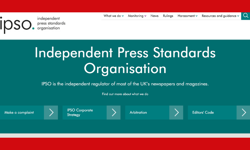At this stage in the great app experiment, publishers aren’t expecting to make huge profits in the near future. Until tablets are everywhere and reaching large audiences, the success of your product isn’t measured in downloads, but in ratings and awards.
In November 2010, BBC Magazines released Focus Magazine for iPad, an interactive edition of the company’s science monthly. Since its launch, Focus has maintained a consistent 4+ star rating in the App Store and was recently rated by iMonitor as the joint-best publication app in the world.
Being a science magazine, it seems appropriate that Focus was BBC Magazines’ test subject. The company partnered with app developer Mobile IQ to build a publishing platform that can convert InDesign documents (the industry-standard for print) into iPad-friendly pages, making it easy for magazine designers and editors to create content for tablet devices.
Focus Magazine was tasked with producing a high-quality app that would be sustainable in the long term as a publishing model. Our approach was to keep the creative team small and to make the production process as efficient as possible. Here's what we learnt along the way…
1. Keep it creative
Only 18 months ago, no one owned an iPad. Back then, it wasn't clear how to best present a digital publication on the device. Would people be satisfied with an easy-to-make PDF-like document, for instance, or would they expect an all-singing, all-dancing, interactive magazine? And with no market to research, these sorts of questions were impossible to answer.
The Focus app was launched a few months after the first wave of magazines such as Wired and Popular Science. In theory at least, the advantage to not being among these digital pioneers was that we would be able to analyse the various approaches that had been taken to translate printed pages to a touchscreen device.
But identifying what others might have done wrong doesn’t necessarily help you find the right way to solve particular problems. At Focus, we brought together a tiny yet talented team of two or three designers and editors to produce a magazine purpose-built for the iPad (we jokingly called ourselves the iTeam). This reflects an ongoing trend in tablet publishing: content is handled in-house by creatives who produce the printed publication, and who know their brand inside-out.
2. Stay simple
One of our early App Store reviews summarises our vision that tablet editions should be stunning yet simple: “The effects and interactivity are fun and stylish but not overly distracting. This app is the perfect example of a digital magazine.”
Focus is aimed at people who are interested in science, but don't necessarily have a background in it. We wanted our iPad edition to be as accessible as the magazine’s content, so we’ve tried to apply this approach – one that emphasises accessibility – throughout the app.
For example, many magazines still include a daunting page of instructions in every issue on how to use the app, which immediately gives users the impression that the app will be hard to use. Navigation should instead be intuitive, reflecting how users naturally use their iPads. Our app’s welcome page includes just a few explanations.
One of the greatest conflicts of interest between users and creators is whether magazines are available in both portrait and landscape mode. The Wired UK app, for instance, was initially only available in portrait and, as one reviewer pointed out in the App Store: “reading in portrait or landscape should be MY choice, not yours.” In fact, our users consume the Focus app in both orientations almost equally – 60 per cent in portrait mode.
But designing pages in two orientations significantly increases the time it takes to create an issue. Although it doesn’t quite double the production time, we guesstimate that it increases our workload by around 50 per cent. By designing pages to look uncluttered, it's easier to keep content consistent between orientations, and also makes the design process much less time-consuming.
3. Experiment with features
Features can mean either magazine articles or aspects of tablet technology. One surprising thing we discovered from early issues is that sections of the magazine that are popular in print don’t necessarily become the favourite features of the app.
The Q&A section, where experts answer life’s big questions (such as ‘Why is space dark?’) has traditionally helped Focus shift extra copies on the newsstand. But on the iPad, user feedback suggests that people prefer the MegaPixel section, a gallery of images from around the world, such as a magnified snowflake or a lake of lava.
MegaPixel is probably more popular on the iPad because it leverages technology to enhance the content. With a picture gallery, users can zoom in on images to explore them in detail – making the most of the touchscreen – while photos can be tagged with geographic location to pinpoint where they were taken, which users can see in Google Maps, giving the images context.
Not every feature in a magazine will work well on the iPad either, and you shouldn’t be afraid to exclude pages if you think they’ll be unsuitable. At the moment, the iPad edition of Focus constitutes only around 95 per cent of the printed publication.
So what content should you leave in or out? Consider when it’s worth optimising it for a touchscreen device. One of the sections we don’t include in the Focus app are the puzzle pages, simply because adding the interactivity required to do it justice would require development time that we felt would be better spent on creating the core content. Understanding which features should be enhanced will help you manage time and money, and budget your resources accordingly.
4. Let your app evolve
Is a flashy feature genuinely useful, or just a gimmick? The only way to tell is to let your users decide. The developers of BBC Magazines’ publishing platform, Mobile IQ, also built the BBC News app. The app’s main functionality is built on swiping your finger across a carousel of images to navigate between news stories, a feature that’s well executed and intuitive to use.
But when we implemented the carousel in the Focus app, we soon noticed that our users would fail to notice it was even on the page, meaning that they would miss some of the content. This experience not only made us stop using the carousel, it also prompted a general re-think of when information should be hidden by default.
With unlimited internet bandwidth and storage space, digital magazines could be chock full of media that would be downloaded with every issue, allowing users to watch videos and interact with graphics wherever they may be. This technological utopia doesn't exist yet though, so we have to compromise on what to include.
Over the last few months, we’ve been adding more media to each issue, with the addition of animated openers to features, for instance. So to keep the file size under our self-imposed limit of 100MB per issue, we decided that bespoke content created especially for the Focus app should be bundled with the issue, while non-exclusive media such as video trailers should be hosted on external web servers.
People are often limited by how much they can download over 3G and even Wi-Fi, which means having to add a disclaimer to say when media is being streamed over the internet so that users don’t inadvertently go over their data allowance. So far, we haven’t received any complaints about this approach, whereas other magazines are still criticised for 500MB downloads, suggesting we’ve done the right thing.
5. Review the ratings
Unlike readers, who voice their displeasure at a magazine in a strongly-worded letter or email, iPad users can cause rapid and lasting damage to your reputation through low ratings. Users are unforgiving of technical issues, expecting bugs to be fixed immediately, as we discovered during an incident I call the Christmas Crash.
Like the vast majority of apps, Focus occasionally suffers from small bugs that can cause unexpected crashes. In late December, a bug in the January issue stopped the download from installing. Although the developer managed to fix the problem in record time (just two days to identify the bug, two to get an app update approved by Apple), we lost our 5-star rating almost overnight.
While I received a handful of emails about the issue, it wasn’t until we checked reviews in the App Store that it became clear that the crash was a widespread problem. In the long term, we were lucky our star rating was high enough to buffer us against the brief period of bad reviews, but it illustrates the importance of constantly keeping track of comments in the App Store.
6. Think different
So how do tablets fit in the wider publishing spectrum? For now, we don’t need to worry too much about cannibalising print sales because the user base is still small. But there’s no doubt that the parameters of the great app experiment will continue to change as iPads become more popular and Android-powered devices start to muscle in on the market.
Around 40 per cent of Focus Magazine’s circulation comes from subscriptions, and subscribers to the print edition currently get free access to digital issues through the app, which makes up 60 per cent of downloads. Over the past few months, the iPad edition has been on special offer at half the newsstand price, which has more than doubled sales. BBC Magazines will soon offer Apple subscriptions and, based on reports from other magazines, we can expect a significant boost to downloads.
Apple’s famous slogan – think different – has never been more appropriate: don’t follow the crowd. The trend in tablet publishing is still to chase the ‘wow factor’ and offer users flashy features. But this often only serves to show off the technology and not the magazine. The creative team behind the Focus app believes that magazines should only enhance where appropriate, giving text and other core content enough room to breathe. Sometimes readers just want to read.










